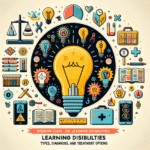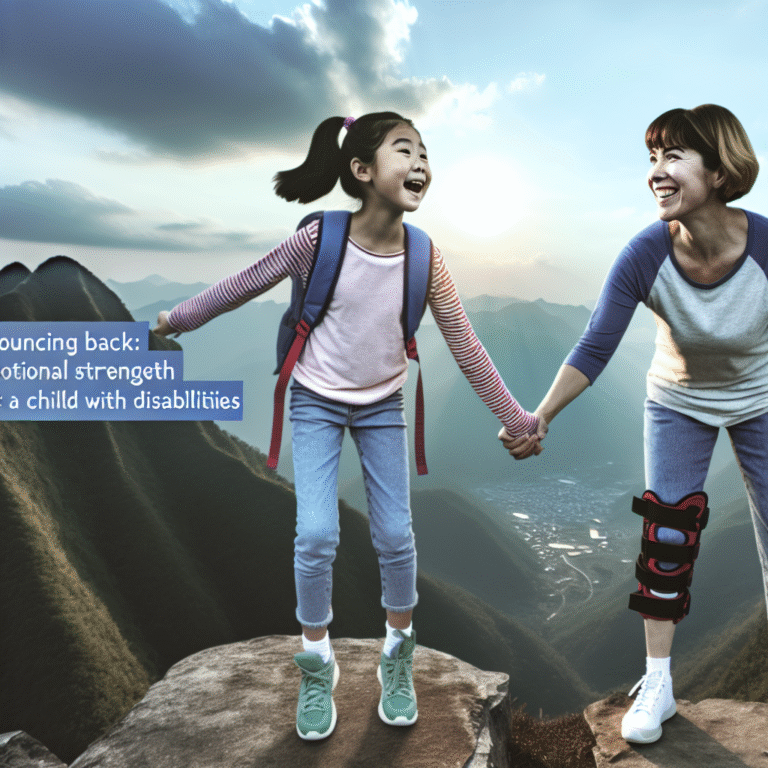
Title: The Ultimate Guide to Navigating the Struggles: How Learning Disabilities Can Fuel Depression in Children and Adults
Introduction
Navigating the struggles posed by learning disabilities can often feel like running a marathon with a weighted backpack. For those affected, the challenges extend beyond academics and can seep into emotional and psychological realms, culminating in issues such as depression. According to the National Institute of Mental Health, learning disabilities affect approximately 5-15% of individuals in the United States, and many of these individuals experience concurrent mental health challenges. Today, we will delve into Navigating the Struggles: How Learning Disabilities Can Fuel Depression in Children and Adults, examining how these two complex issues intertwine and offering insights on how to foster resilience and well-being.
Understanding Learning Disabilities
Definition and Types
Learning disabilities are neurological disorders that affect the brain’s ability to receive, process, and communicate information. They can manifest in various ways, including difficulties with reading (dyslexia), writing (dysgraphia), and mathematics (dyscalculia). Each type of learning disability comes with its own unique set of challenges and can impact self-esteem, academic performance, and social interactions.
Statistics and Prevalence
In the United States, the prevalence of learning disabilities among school-age children is significant:
| Type of Learning Disability | Estimated Prevalence |
|---|---|
| Dyslexia | 5-10% |
| Dysgraphia | 5-7% |
| Dyscalculia | 3-7% |
| Nonverbal Learning Disorder | 1-3% |
This data illustrates the broad scope of learning disabilities, each presenting its own hurdles, and highlights the need to understand their effects on mental health.
The Link Between Learning Disabilities and Depression
Emotional Toll of Learning Disabilities
Navigating the struggles: how learning disabilities can fuel depression in children and adults often begins with the emotional toll that these disabilities take. Children with learning disabilities frequently feel a sense of isolation, frustration, and inadequacy as they observe their peers succeeding where they struggle. This emotional burden can manifest as anxiety, leading to feelings of hopelessness and ultimately depression.
Case Study: The Journey of Emily
Emily, a bright 10-year-old girl diagnosed with dyslexia, struggled with reading and often found herself frustrated in a traditional learning environment. Despite her intelligence, Emily faced bullying from her peers, which exacerbated her feelings of isolation. Her parents noticed her withdrawing from social interactions and displaying signs of anxiety. By the age of 12, Emily was diagnosed with depression, illustrating a profound example of how learning disabilities can feed into mental health issues.
Analysis: Emily’s case underscores the critical importance of early intervention and support systems for children with learning disabilities. The social stigma and emotional struggles can lead to severe consequences, making it imperative to recognize and address these challenges.
Factors Contributing to Depression in Individuals with Learning Disabilities
1. Social Isolation and Low Self-Esteem
Children and adults with learning disabilities often face social isolation. The diagnosis of a learning disability can lead to a cycle of failure, impacting self-esteem and fostering feelings of worthlessness. These negative feelings can spiral into depression, transforming into a vicious cycle that is difficult to escape.
2. Academic Challenges
The frustration that accompanies academic struggles can impact a person’s self-worth. As grades suffer, so too does one’s self-image. Students may perceive themselves as "less than" their peers, which can lead to chronic feelings of sadness and depression.
3. Family Dynamics
The dynamics within a family can also play a role in mental health. Parents may inadvertently place pressure on children to succeed, which can heighten feelings of anxiety and inadequacy in those with learning disabilities.
Strategies for Navigating the Struggles
Early Identification and Support
Early intervention is key. Parents and educators must work together to identify learning disabilities as soon as possible. Resources such as tutoring, specialized education plans (IEPs), and counseling can provide vital support.
Case Study: Teaming Up for Success
Daniel, a 15-year-old boy with attention deficit hyperactivity disorder (ADHD), started receiving personalized tutoring and counseling after being diagnosed. With the support of his parents and teachers, he began to flourish academically and socially. Engaging with not only a tutor but also a mental health professional helped him build confidence and resilience.
Analysis: Daniel’s case demonstrates how effective support systems can mitigate the risks of depression associated with learning disabilities. A multi-faceted approach that includes both academic and emotional support can yield significant positive outcomes.
Building Coping Mechanisms
Teaching children and adults coping mechanisms can substantially improve their resilience against depression. Mindfulness, positive self-talk, and stress management techniques can empower individuals to navigate the struggles that arise from their learning disabilities.
Creating a Supportive Environment
Educational Strategies
Schools must foster inclusive environments that accommodate diverse learning needs. Curriculum adaptations, access to technology, and supportive teaching strategies can help students with learning disabilities thrive.
Family and Social Support
A robust support system at home can bolster a child’s confidence. Open communication, encouragement, and celebrating small successes can work wonders in building self-esteem and combating feelings of isolation.
Peer Support Groups
Encouraging participation in peer support groups provides children and adults with a safe space to share experiences. This can foster community and reduce feelings of loneliness.
Conclusion
Navigating the struggles: How learning disabilities can fuel depression in children and adults is a nuanced topic that warrants thoughtful examination and discussion. By understanding the emotional toll learning disabilities can take and implementing effective support mechanisms early, we can pave the way for more robust mental health outcomes. The journey toward resilience is ongoing, and with understanding, empathy, and action, individuals can discover empowerment amidst their challenges.
FAQs
1. Can learning disabilities lead to depression in anyone?
Yes, individuals of all ages can experience depression as a consequence of the ongoing challenges posed by learning disabilities.
2. What are the first signs of depression in children with learning disabilities?
Signs may include withdrawal from social activities, changes in mood, academic decline, and increased anxiety.
3. How can parents support children with learning disabilities?
Parents can provide a supportive environment, advocate for educational resources, and encourage open discussions about challenges and successes.
4. Is therapy effective for individuals with learning disabilities facing depression?
Yes, therapy can be highly effective, offering coping strategies and a safe space to discuss feelings of frustration and inadequacy.
5. What role do schools play in supporting students with learning disabilities?
Schools should offer inclusive education, adapt teaching strategies, provide access to resources, and foster a supportive culture among peers.
By recognizing and addressing the complex relationship between learning disabilities and depression, we can empower individuals to reclaim their narratives, promoting mental health and well-being for all.









